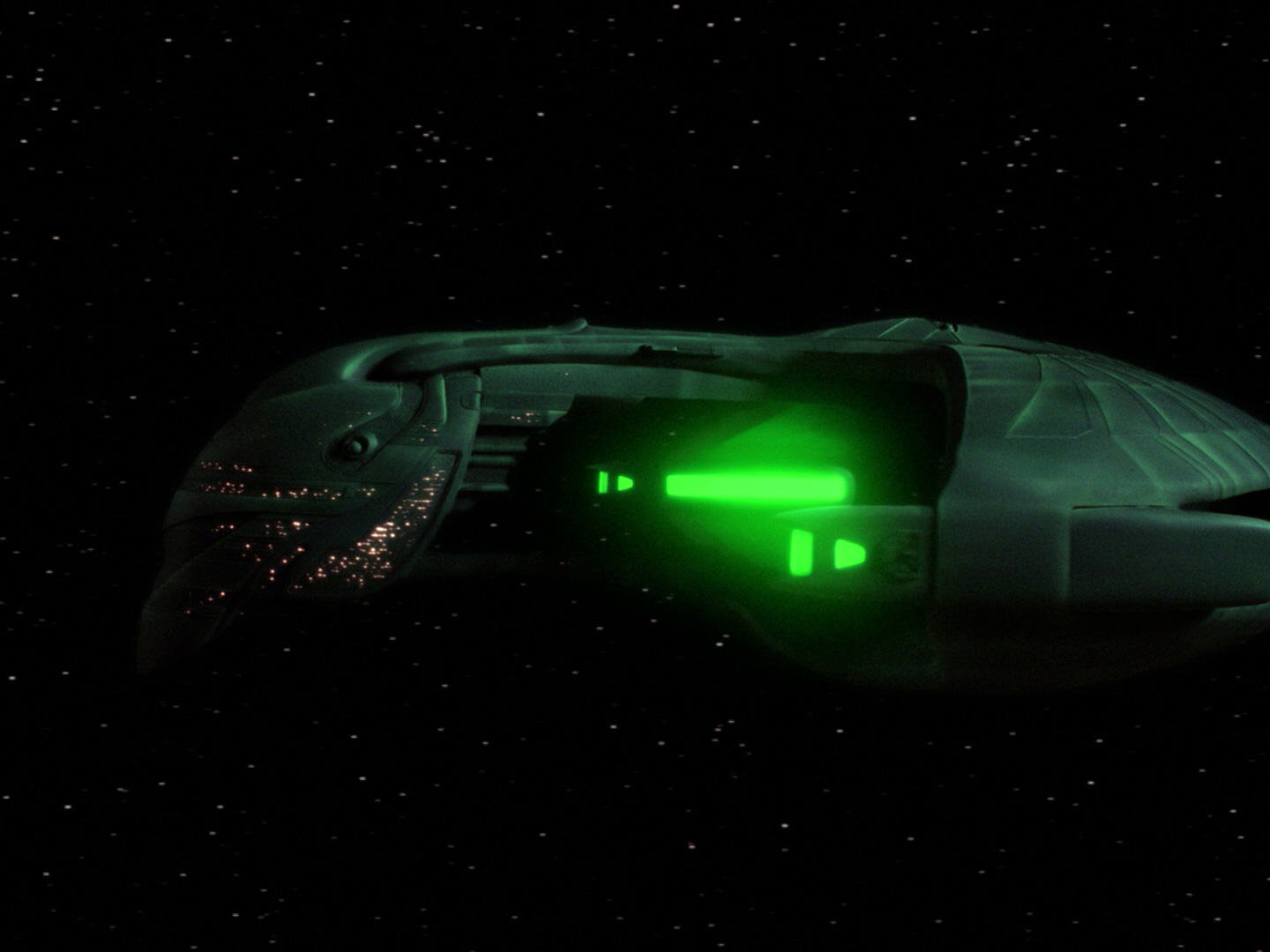“Heck, it’s the same dance, it’s just a different tune.”
The last episode of the first season of Star Trek: The Next Generation has a lot going against it – it’s a cheap knockoff of the basic plot of the Original Series’ Khan episode, “Space Seed,” and its A-story (the Enterprise encounters a group of cryogenically-preserved humans) and its B-story (the Romulans return to the galactic stage) have absolutely no relation to one another. And yet these things scarcely matter: “The Neutral Zone” is an admirable end to the season, competently managed, and even thrilling in its final moments, as the Romulans reveal themselves.
“The Neutral Zone” is TNG’s first real Romulan episode (although they did feature offscreen in “Angel One,” which makes some of the dialogue in “The Neutral Zone” seem inaccurate). It’s also, importantly, the series’ first Borg episode – though we don’t confirm that until the middle of the next season, and the connection is therefore often overlooked. The Enterprise heads into the Romulan neutral zone to determine why Federation colonies have vanished, and discovers that they’ve been scooped off the face of their planets by an unseen force. The Romulans, on a parallel mission, come in contact with the Enterprise, and all hell breaks loose. Marc Alaimo, who would go on to become one of Star Trek’s key recurring figures on Deep Space Nine, plays one of the Romulans in a deliciously lizard-like performance, while Ron Jones delivers one of TNG’s signature leitmotifs in the musical score – the nervous, developing lilt that would define the Romulan race for most of TNG’s run. Worf also gets to cough out his first (of many) racist tirades about the Romulans – memorably mentioning that Romulans consider humans and Klingons to be wastes of skin.
But all this is just window-dressing to the big piece of candy for me: I am in love with that ship. The Romulan warbird, when it is revealed, became – and remains – my favourite starship design of all time, within Star Trek and without. This means I like the warbird more than the Millennium Falcon, the Firefly-class freighter, the Enterprise herself, the Imperial Star Destroyer, the Sulaco, and anything else that’s carried humans into the stars in the history of television or film. Vivid green and slouching through space like a snapping turtle, the warbird’s improbable design – no particular angle upon it fully conveys the totality of its curves – has obsessed me since the day I saw it. I probably drew more of these in my schoolbooks than I ever drew any other spaceships, machine guns, or ejaculating penises. By revealing this about myself, I may now have allowed you to know me better.
Meanwhile, in the A-story, we have Deadwood regular Leon Rippy in an enjoyable role as L.Q. “Sonny” Clemens, a country singer from the late 1980s, who died of a failed liver and was immediately frozen for reanimation when “failed liver” was on the list of curable maladies. It’s not a bad idea, but “The Neutral Zone” skips completely over its biggest improbability: even assuming the cryogenics firm would put its frozen corpses in Earth orbit (as the episode claims)… how on earth would the capsule have found its way to the neutral zone?! I guess we can at least be glad that none of the unfrozen humans – the other two survivors are stalwart representatives of mid-‘80s Americana, a financier and a housewife – try to kill Picard and steal his ship.
“The Neutral Zone” doesn’t really have a full sense of imagination about the quantity of shock the unfrozen survivors would be experiencing in their situation (they all expected to be revived within decades of their “deaths,” not four centuries later). The episode is more interested in playing for “man out of time” laughs instead of any real sense of capturing the moment, although even in this, “The Neutral Zone” ultimately scores a coup: through the Ralph Offenhouse character, the financier, the episode provides the simplest, yet most complete, statement of the nature of life in the 24th Century. His money gone and his sense of purpose shattered, Offenhouse asks Picard what he’s supposed to do – to which Picard memorably replies, “The challenge, Mr. Offenhouse, is to improve yourself. To enrich yourself.” To an alarmingly specific degree, those are the words I’ve lived by since I was thirteen years old.

Blogging The Next Generation is like my first Geocities site back in 1997. With nothing better to do with it, I wrote miscellaneously about Star Trek – now I’m doing that for every single episode of Star Trek: The Next Generation.
This series runs every Tuesday and will do so for the entire release of TNG on blu-ray. Season 2 is now available, and my coverage of it begins with “The Child” next week.
